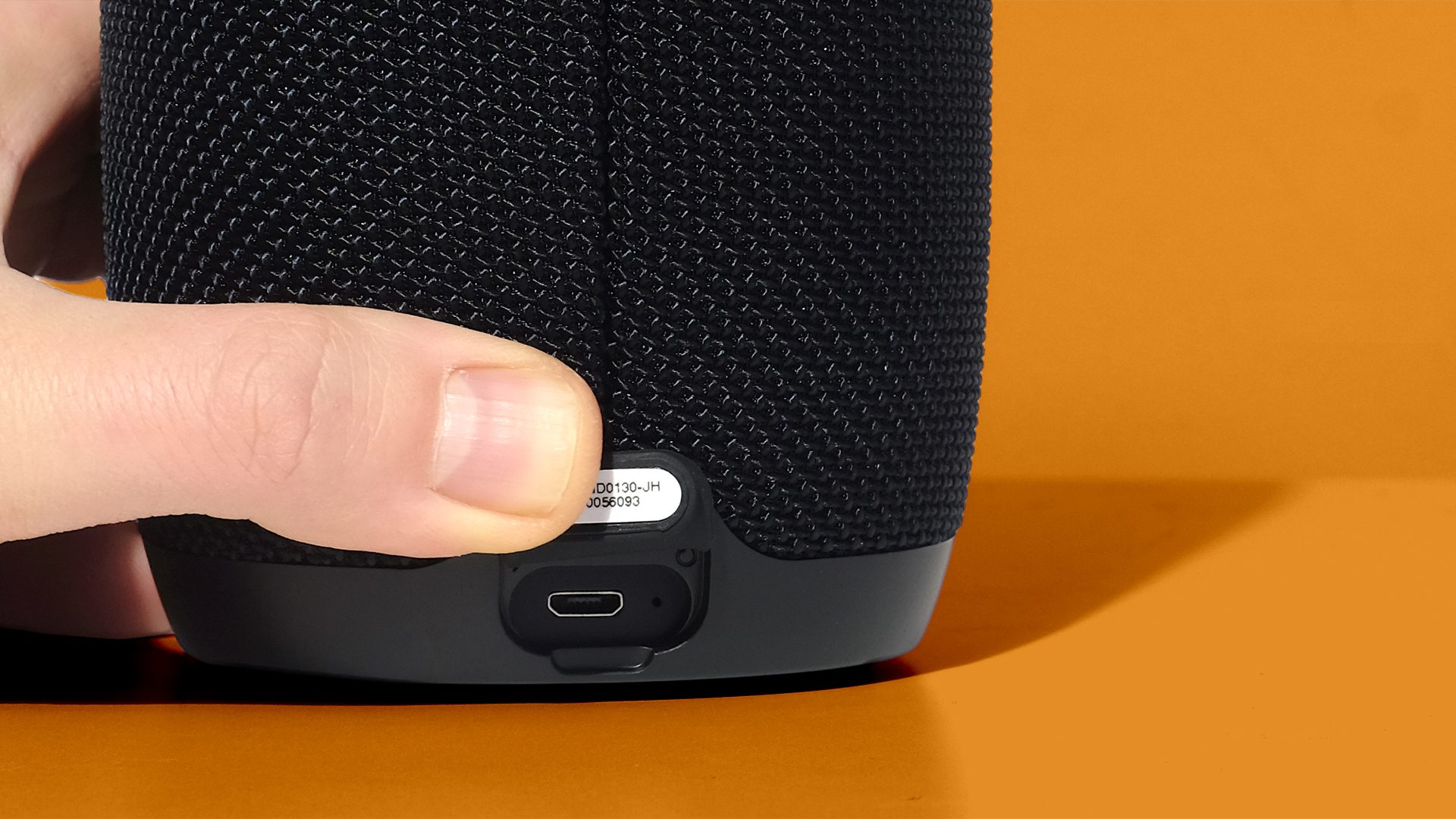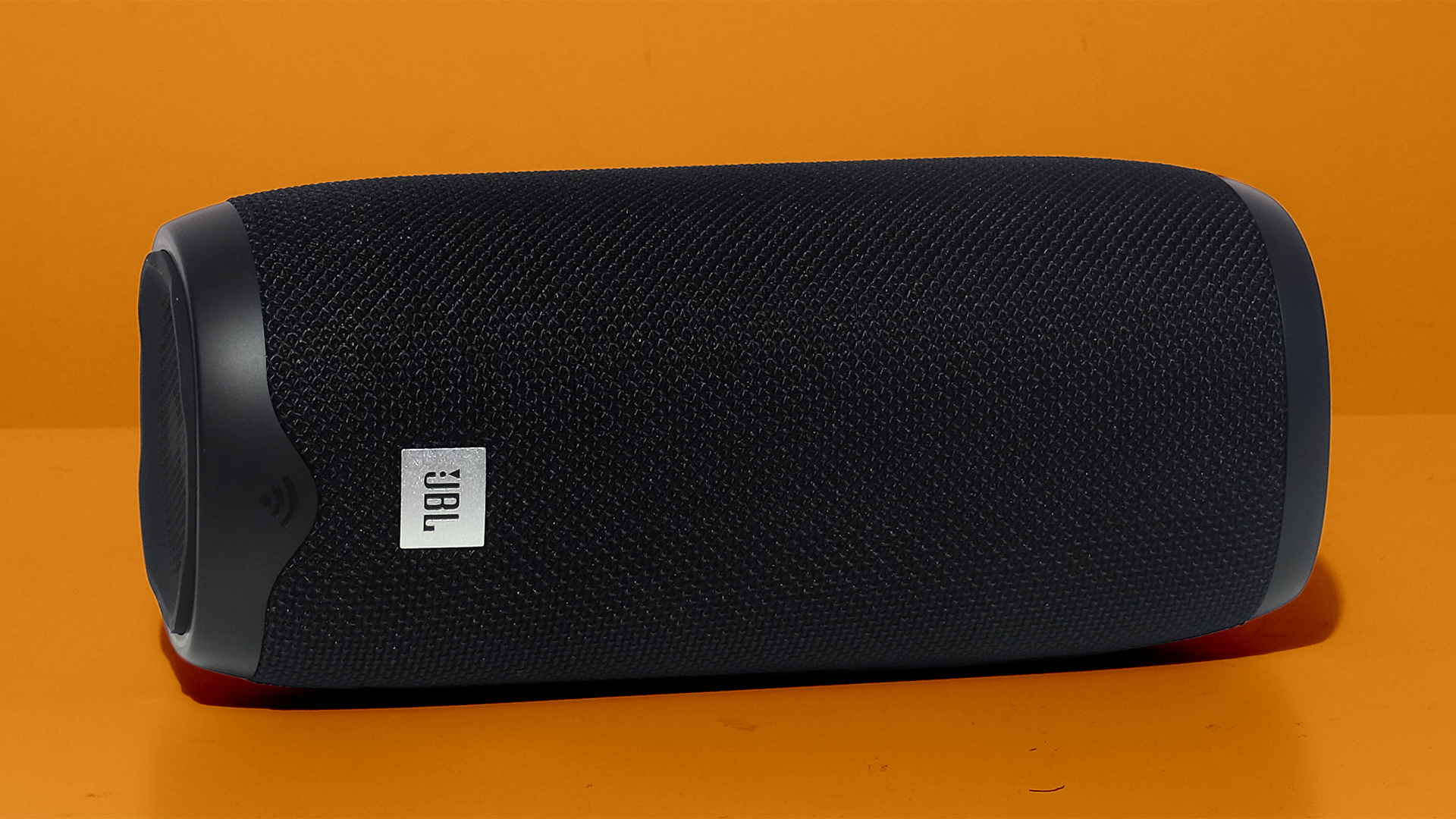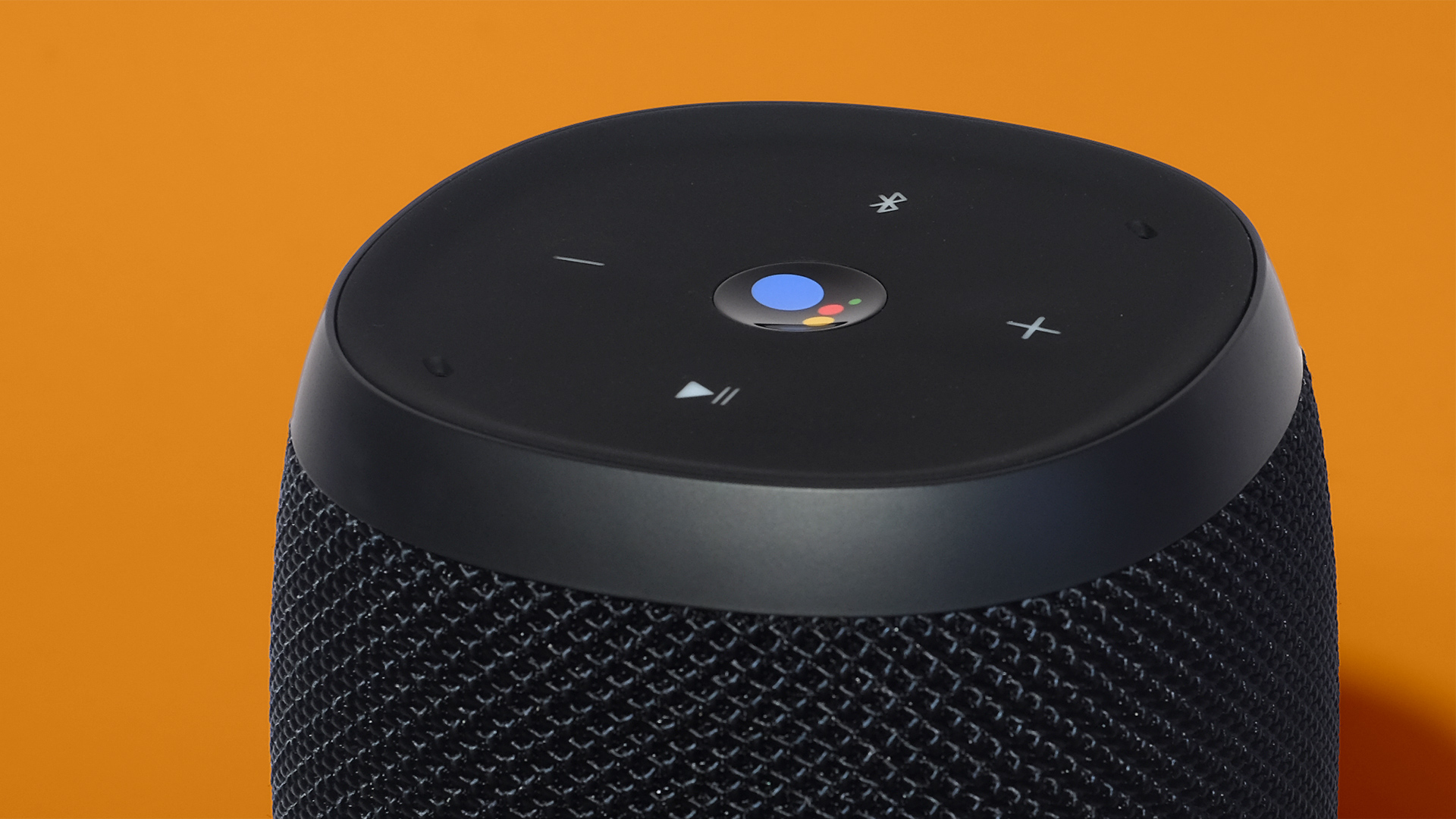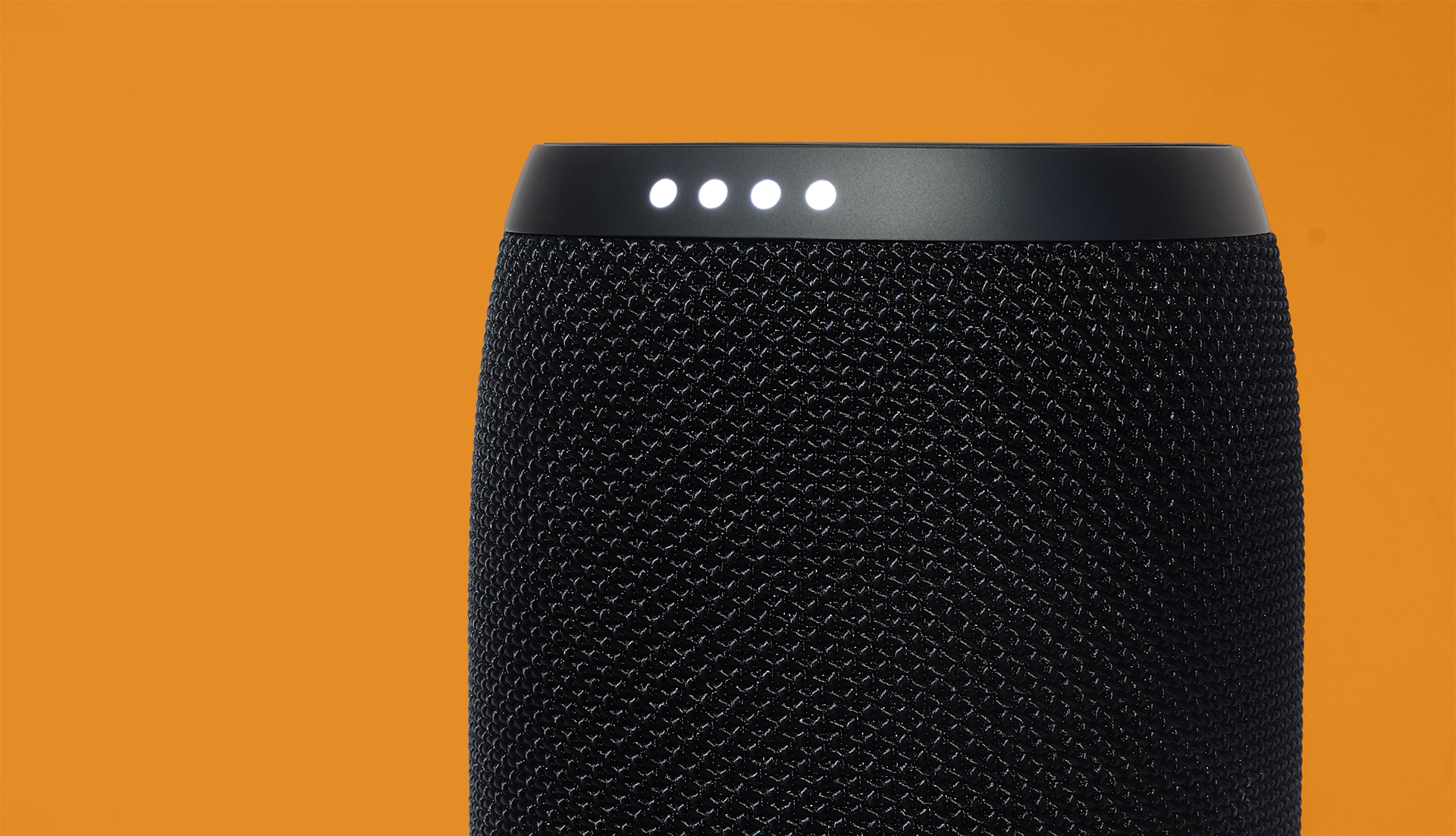TechRadar Verdict
It may not be the pinnacle of sound dynamics and coherence, but this full-sounding smart home speaker is more flexible than most.
Pros
- +
Fully portable
- +
Has Bluetooth as well as Google Home
- +
Good mic array
- +
Full sound
Cons
- -
Not as dynamic of exciting sounding as the best
- -
Constrained soundstage
- -
No aux input
Why you can trust TechRadar
The JBL Link 20 is a Google Home speaker. It gets you all the benefits of the original Google Home, but adds battery-powered portability, great water resistance and JBL’s own sound signature.
At £199/$199 it’s not cheap, though.
If you don’t care too much about portability, the Sonos One sounds significantly better. However, the JBL Link 20 is still a solid smart speaker with better sound than some, and is worth considering if you see it sold at a good price.
Design
The JBL Link 20 is a mid-size wireless speaker. It’s probably too big to just keep in your rucksack daily, “just in case” it’s needed, but is still easily small enough to carry around the house. It weighs 960g: not heavy.
This is a hybrid speaker of sorts. The Google Home assistant is its most obvious feature, something you’ll almost certainly use solely at home. But the JBL Link 20 also has the design, the Bluetooth streaming and integrated battery needed for a good all-terrain speaker.
Similar to the UE Megaboom, the JBL Link 20’s top and bottom are rubbery plastic, the sides a curved column topped with tough nylon weave.
This is more resilient than the painted aluminium grilles of some alternatives. While we don’t tend to torture the products we review, the Link 20 feels like it could withstand some rough treatment and the odd drop off a table.
Sign up for breaking news, reviews, opinion, top tech deals, and more.

One other part of its ruggedisation doesn’t have to rely on our hypothetical anecdotes either. The JBL Link 20 is rated to IPX7, meaning it can withstand rain, water jets and even being submerged in water.
You could even put it on a shower shelf for some tunes while you wash. To do with a Sonos One would be a bad move. Trailing power leads into the shower isn't the smartest of ideas.
A rubber flap near the bottom of the JBL Link 20’s rear needs to be in-place for the water resistance to count. This covers the microUSB port used to charge the battery.

In some ways the JBL Link 20 is a very feature-rich, versatile speaker. However, unlike most pure Bluetooth models there is no aux input. It’s a shame, but in our opinion nowhere near as much an issue as the phones that leave out a headphone jack. We may have a Bluetooth-less iPod Classic in the cupboard, but can’t remember the last time it had a day out.
The JBL Link 20 can skip between roles as a home and portable speaker. However, its looks are those of a portable Bluetooth one, and the design is not optimised for cramming into a bookshelf between your well-worn Harry Potters and John Grishams. The drivers sit on the sides of the Link 20’s column, so positioning it like this will partially block them.
It’s not a speaker that screams “living room centrepiece”, but this driver array does make it deliver 360-sh degree sound.

Turn it on using the power button on the back and a little LED array alongside will show you how much of the battery is left. A full charge lasts up to 10 hours, which is fine in practical terms for most occasions, but below, for example, the Bluetooth-only UE MegaBoom. That speaker lasts up to 20 hours.
Once setup using the Google Home app you can simply say the usual “Hello Google” prompt to activate the speaker. This makes an LED array on the front light up, to show it’s listening. When playing back audio these lights also act as a volume indicator.
Thanks to a dual microphone array on the top plate that’s far more sensitive than your average Bluetooth speaker mic, you can talk from any direction and don’t need to be too close. We were able to talk to the JBL Link 20 from 5m away at a normal, fairly quiet, speaking volume and it understood the command.

When you have music playing at a fair volume you do need to speak up a little, though, and the JBL Link 30 predictably doesn't work all that well from another room. However, microphone sensitivity is easily good enough to make this seem a “proper” smart speaker. JBL hasn’t just crammed Google Home into one of its existing models.
We’re glad there are physical controls on top, mind, because saying “Ok Google” all the time gets old quick, quicker than saying “Alexa”. Four syllables may be too much.
Pressing the central button up top lets you speak your command without the wake word: most welcome. There are also volume and playback controls, and a button to switch to the Bluetooth mode. For those yet to use a Google Home speaker, it’s also worth noting you can “Cast” to the JBL Link 20 using many phone apps, and stream directly through the Spotify app.
Google Home is also a multi-room system.
In our experience at least, the JBL Link 20 works flawlessly. No issues with setup, no issues with Wi-Fi streaming, and none with Bluetooth either. Faster charging would have been sensible, though. The 5V, 2.3A charger delivers less juice than that of most fast-charging phones, and therefore a full recharge takes a few hours.
Sound quality
The JBL Link 20 sounds fairly good. It uses two 2-inch full-range drivers that sit towards the bottom of each side of the tower, presumably using the rest of the space for electronics and cabinet space.
Given the lack of bass radiator, used in many wireless speakers but surprisingly few smart home ones, low-end power is reassuringly solid. The sound’s lower frequencies are full and respectably powerful given the size. Sonos’s One has substantially better very low bass power, but the Link 20 embarrasses the Amazon Echo, which just doesn’t have the low-bass punch to make kick drums sound right.
Unlike some other JBL speakers, the bass is also not murky. It’s not super-taut either, but this is mostly something we’ve only noticed in direct comparison with the best in this class.
This is an enjoyable speaker that we find particularly solid for electronic and instrumental music. There’s no harshness, and it sounds right at low or high volumes. However, there are some clearer issues with the mids and treble that means the JBL Link 20 is the best-sounding £200/$200 wireless speaker.

The treble is slightly soft, lacking the bite and clarity of a speaker with a separate tweeter, or one that uses a radiator to take on the responsibility for the bass.
It’s the JBL Link 20’s mids that make the speaker sound a league below the Sonos One, though. They are relatively low on detail don’t have great presence. As a result, the Link 20 can’t project vocals anywhere near as well as the best small wireless speakers.
A comparison with the much cheaper (if also simpler) Jam Heavy Metal is revealing. Vocals leap out of this £69/$60 speaker, sounding much more alive and vital than they do through the JBL, particularly at low and mid-level volumes.

Comparing with the smallest Sonos is more worthwhile, though, as the Jam Heavy Metal also doesn’t quite hold up as well when trying to fill large rooms. It is a smaller speaker, after all.
The Sonos One’s more refined mids lend arrangements much more space, resulting in a more dynamic and well-rendered sound that is closer to that of a proper hifi. At times vocals can seem constrained within the JBL Link 20 tower’s dimensions.
Prepare you expectations. While this is a fine-sounding speaker, it’s better at delivering power than fidelity.

Verdict
The JBL Link 20 is a wireless speaker that flips with a button press between roles as a smart home unit and a portable Bluetooth music unit you can take anywhere.
It’s tough, water resistant, and has microphones sensitive enough to let you talk to it casually, not like someone stuck on an automated bank phone line.
Sound quality is good, although thanks to a slightly congested soundstage and limited mid-range projection, it doesn’t challenge something like the home-tethered Sonos One.

Andrew is a freelance journalist and has been writing and editing for some of the UK's top tech and lifestyle publications including TrustedReviews, Stuff, T3, TechRadar, Lifehacker and others.
